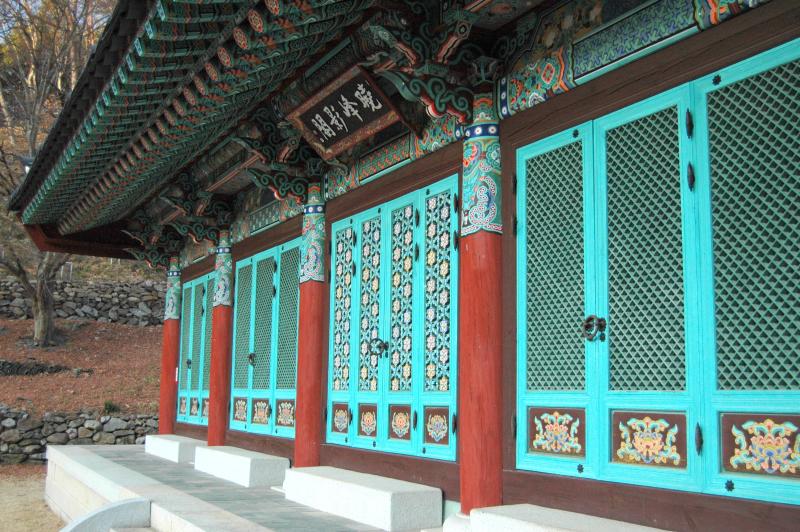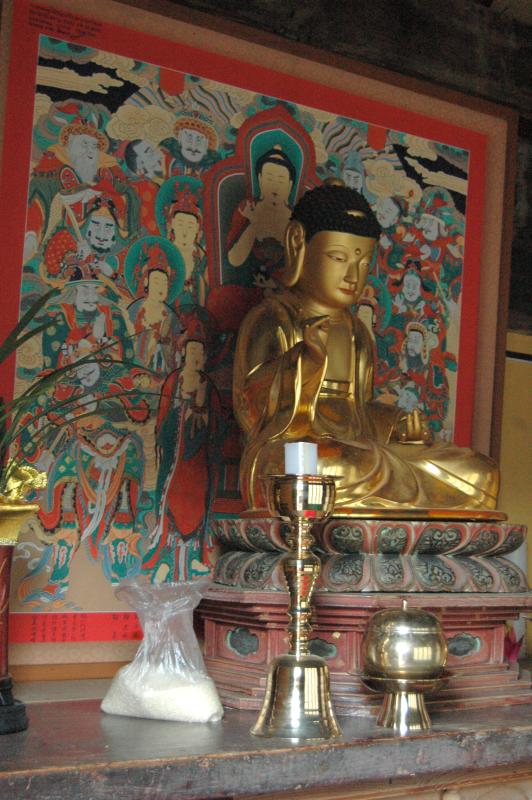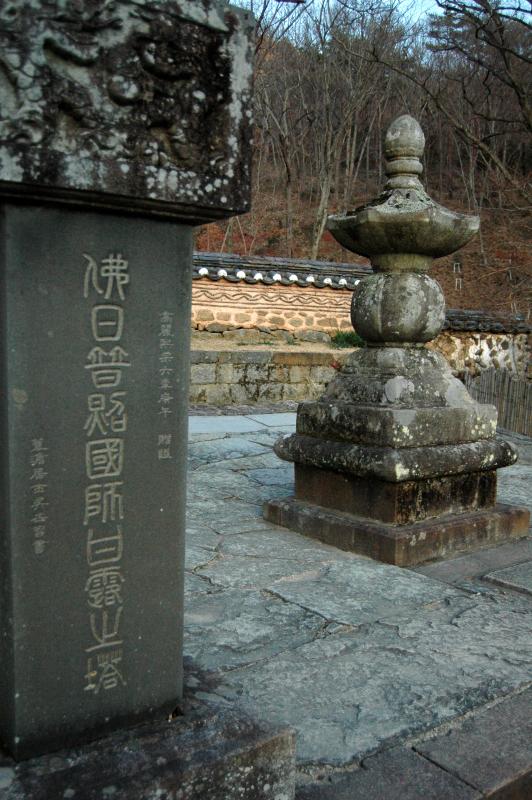The monks were everywhere. One was beating his wooden moktok, another was laboriously carrying a load of plants, and a third was walking through the courtyard. A number were meditating behind one of the hall’s closed doors, while even more were seen walking in a separate section of the temple, restricted to visitors. One was even seen bringing a Dunkin’ Donuts bag into the monks-only section. At that point, the Lady in Red pinched me, telling me that this is indeed not a dream – there really are lots of monks here. Then again, why wouldn’t they be?
The temple was founded in the late 10th century by Master Haerin, and records confirm the existence of a small temple called Kilsangsa. An edict bestowing the title of Daeseonsa (great seon monk) to Hyegam by King Gojong dates from ca. 1216, while King Injo (r. 1623-1649) expanded the temple, using it as a place to pray for the defense of his country. Although heavily damaged during the second Japanese invasion in the late 16th century and the Korean war, the 51 buildings of Songgwangsa offer a complete mix of ages, from still-smelling-the-fresh-paint new all the way back to the 14th century.
One of the three jewels of Korean Buddhism, Songgwangsa shares the honor with Tongdosa (which houses some of Buddha’s relics) and Haeinsa (which holds the wooden blocks needed to print a sutra). Songgwangsa is famous for their monks – in the temple’s history, there were 16 National Masters of seon, or Zen, during the Goryeo Dynasty. Even today, the temple still serves as a training center for the Jogye denomination of Buddhists. While we typically saw younger monks doing much of the dirty work, more than a few had gray hairs to give away their advanced age.
During this trip, however, most of the buildings were closed up, leaving most of the three National Treasures and twelve Treasures inside them unseen. Some construction also took away from the otherwise beautiful surroundings, but this remains one of the largest – and most serene – Buddhist temples in South Korea.
This large temple has two of the smallest Buddhist shrines I’ve ever seen. To put it another way, the bathroom in my school-provided apartment is almost the same size as each of these shrines. Treasure #302 is a ‘Yaksajeon’, or a shrine to the Medicine Buddha, while treasure #303 holds a palsangdo, an eight-panelled painting showing the eight stages of Buddha’s life. These shrines stand side-by-side, and date back to the mid-17th century.
One final highlight was the staircase to heaven – or at least the stupa of the 1st National Master priest, Chinul. Dating back to 1213, the stone stupa is perhaps the oldest element of the entire complex. Think about that the next time you talk about the oldest thing still standing from your home country.
The monks seemed to pay us no extra attention; perhaps it was the quantity of them that seemed unusual. There is a mystique around the area that’s a little hard to shake. Both the Lady in Red and I felt out of place here – while we’ve enjoyed our visits to Korean Buddhist temples, this was the first time I felt like a ‘C’ student walking around Harvard’s campus.
A version of this article is published in January 2011′s issue of the Groove Magazine.
Ratings (out of 5 taeguks): How do I rate destinations?
Ease to arrive:
Foreigner-friendly:
Convenience facilities:
Worth the visit:
Directions: Get to Suncheon station – from Seoul’s Yongsan station, over a dozen trains will stop at Suncheon station in Jeollanam-do every day. Once at Suncheon station, walk over to the local bus stop and hop on bus 111 (1,100 won) and ride it all the way to Songgwang-sa, the terminus for the bus. This bus will come every 30-40 minutes and will take an hour and 20 minutes. Yes, it’s pretty remote, but it’s worth it.
Alternatively, you can catch a direct bus to Songgwangsa from Gwangju Bus Terminal. That comes 5 times a day, and takes a little over 1 1/2 hours. If you’re coming from the Gwangju area, this may be faster. Admission 2,500 won.
This post was originally published on my blog,Chris in South Korea. If you are reading this on another website and there is no linkback or credit given, you are reading an UNAUTHORIZED FEED.
Share on Facebook











 RSS Feed
RSS Feed
Recent comments